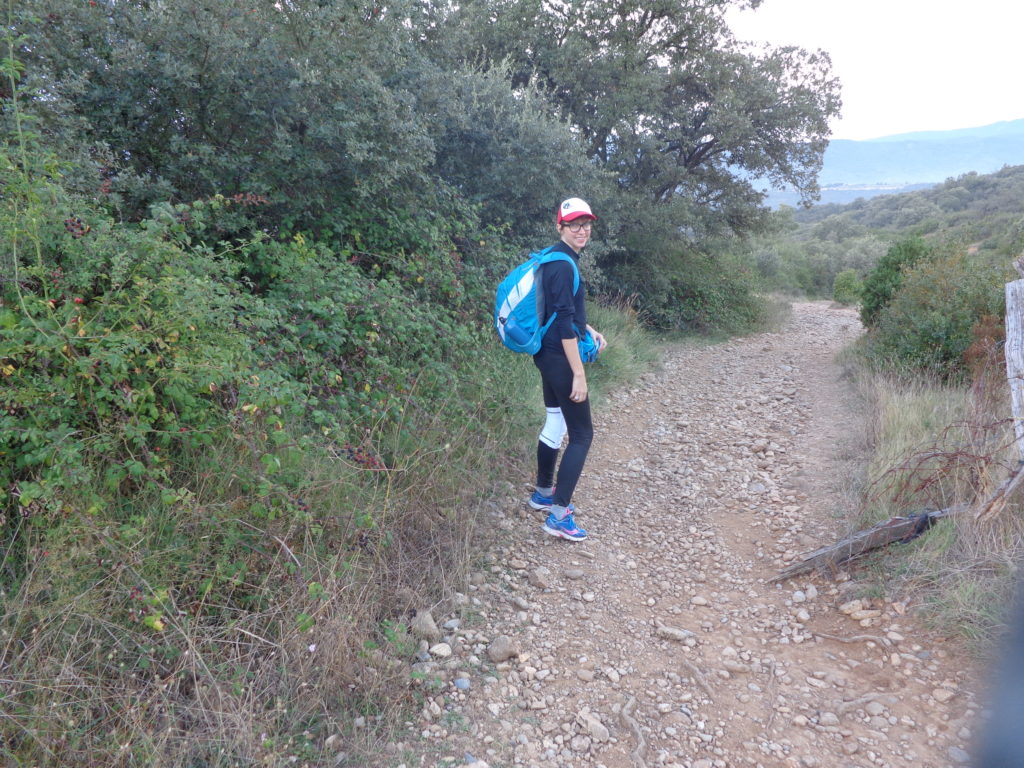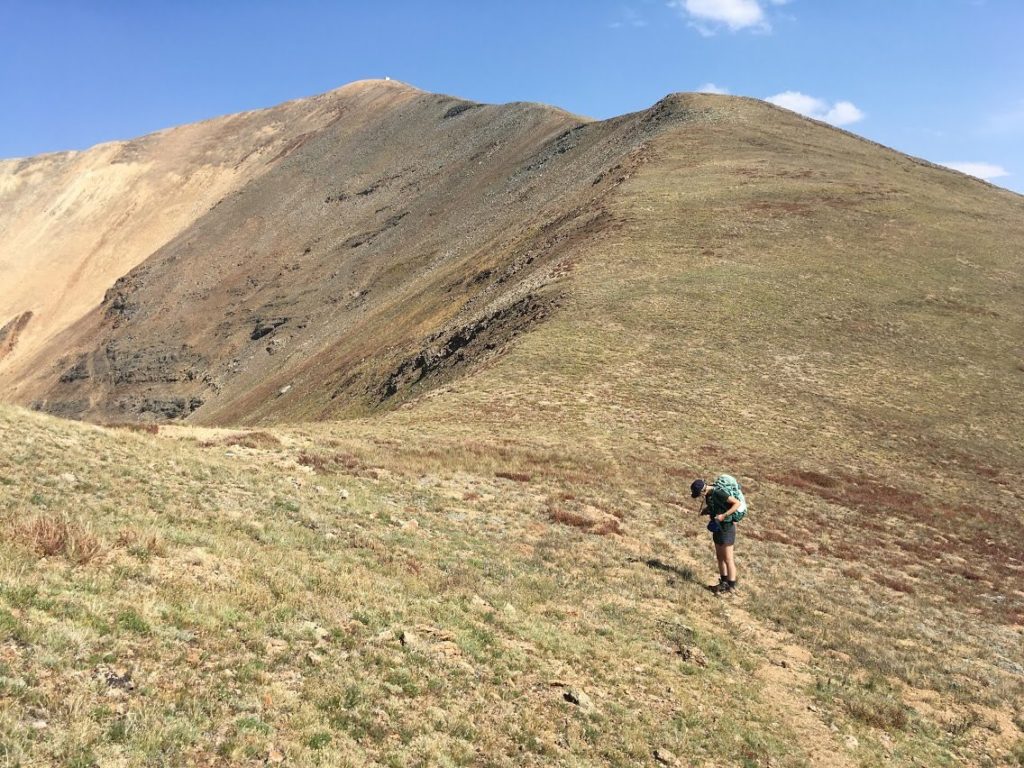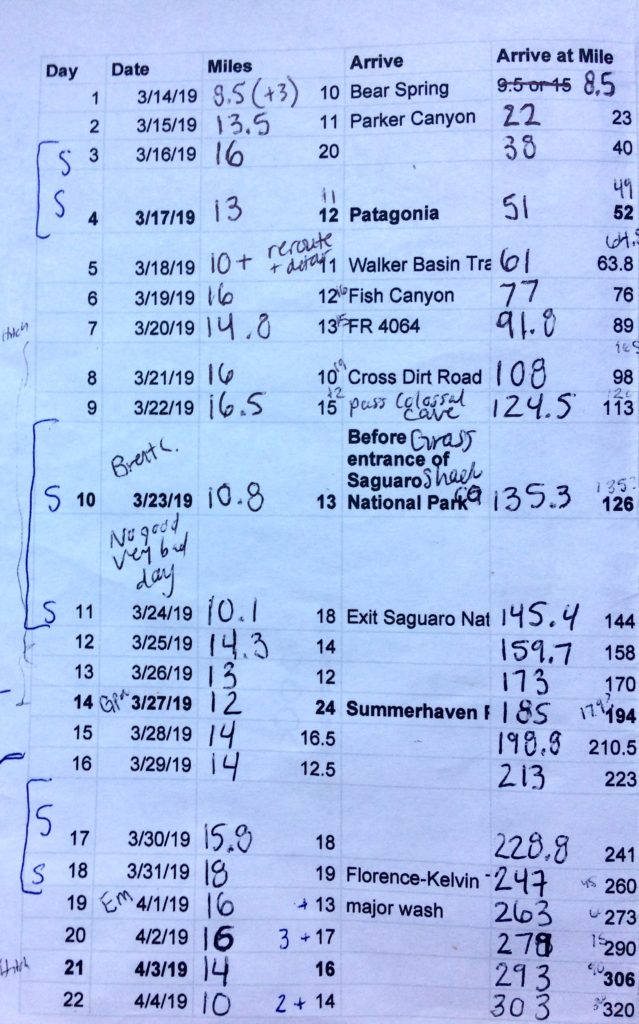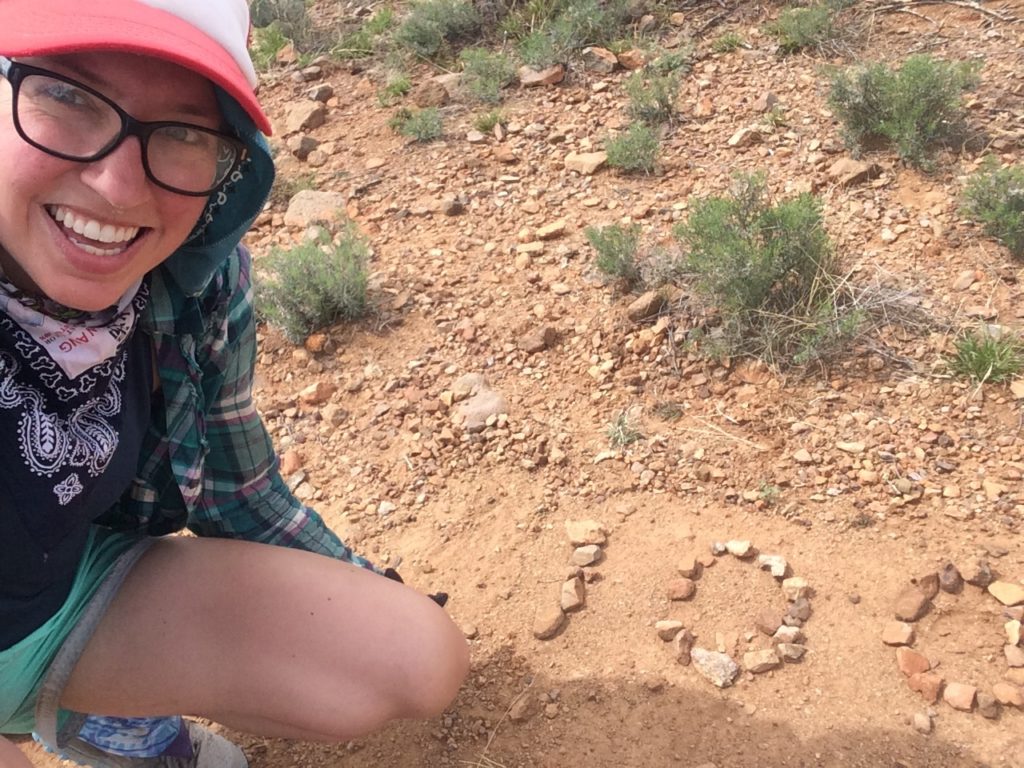My Hiking Background
Back in 2014—years before I ever entered the conservation/camping world—I walked 500 miles across Spain in a month (on the Camino de Santiago). It was mostly flat terrain and with a much lighter day pack (no camping gear; just day snacks), but I used it as a gauge of what I was minimally able to do.

And with 12 months of conservation work under my belt (2017-18), I knew my body would adjust to whatever level of physical activity I was doing. Last fall, when section hiking a chunk of the CDT for a work project, we hiked in pairs with day packs. Through this project I got a little familiar with what hiking 5 miles feels like, what 10 miles feels like—plus it only affirmed my love of hiking.

And then I hibernated all winter.
I didn’t do any physical preparation for the hike. Zip. The first time I walked anywhere with a full pack (gear, water, and food) was on my walk to the Greyhound station in Flagstaff, where I bused to Tucson and got a ride to the start of the trail. I’m not recommending this, simply sharing the situation I was in when I hiked the AZT.
Hiking Estimations
To make my resupply boxes, I had to guestimate how many days it would take me to get from one town to the next. I’m much slower uphill, and although I knew my pace day hiking, I wasn’t sure what my pace would be like with a full pack on rough terrain. So, from my bedroom in snowy Wisconsin in February I picked some numbers, and plopped them into a spreadsheet, trying to keep it around 10/day the first week, then 15. I swiped through Guthook as I did this, to somewhat take elevation into account as well.
The typed numbers below were my original, loose estimations, which I used for food planning—not a schedule I had to stick to. At the end of each day I’d write in pen my actual mileage. Take a look to compare estimates with actual:

Daily Hiking Mileage: AZT
Here’s what my actual mileage was—the pen numbers entered into a spreadsheet:
[Click here to see the spreadsheet in Google Sheets.]
I recorded this data to track my location and progress, but behind every line is a story of what happened that day, what time I woke up, what the terrain was like, what the weather was like, who I ran into, which animals I saw, how my stream crossings went, how I was feeling, etc.—all of which took the spotlight. “The numbers” got the backseat on my hike.
Flagstaff mileage: To explain the discrepancies near Flagstaff, a friend came and picked me up from trail at Marshall Lake Trailhead the afternoon of Day 39. I stayed at her place during my zeros, but she was working out of town (on hitch) through Friday. That’s why I stayed so long in Flagstaff, to see her when she got back from hitch on Saturday.
When I got back on trail that Sunday, the route I took through Buffalo Park ended up being part of the closed trail (ah!). I’d hiked in two miles, discovered this was the closed chunk for logging, turned around, hiked back, called my friend, and she picked me up again. I checked Guthook, and Snowbowl was the easiest access point by car (only 15 minutes from Buff Park) and 100% not part of the trail closures. That’s why mileage jumps to Snowbowl’s 598 on day 46.

How Long Did It Take to Hike the AZT?
With zeros, I was on trail for 57 days. (Almost 8 weeks exactly!)
Without the zeros, it took 51 days to hike.
As I got into a rhythm, I started to aim for 15 miles/day. Sometimes I’d make it, often I wouldn’t—but it felt like a good mileage to shoot for.
From Days 1-39, I hiked an average of 14.3 miles/day.
For the remainder of the hike, my average was 17.3 miles/day (without zeros).
Have any other questions about pacing/mileage? The comments below are for you!